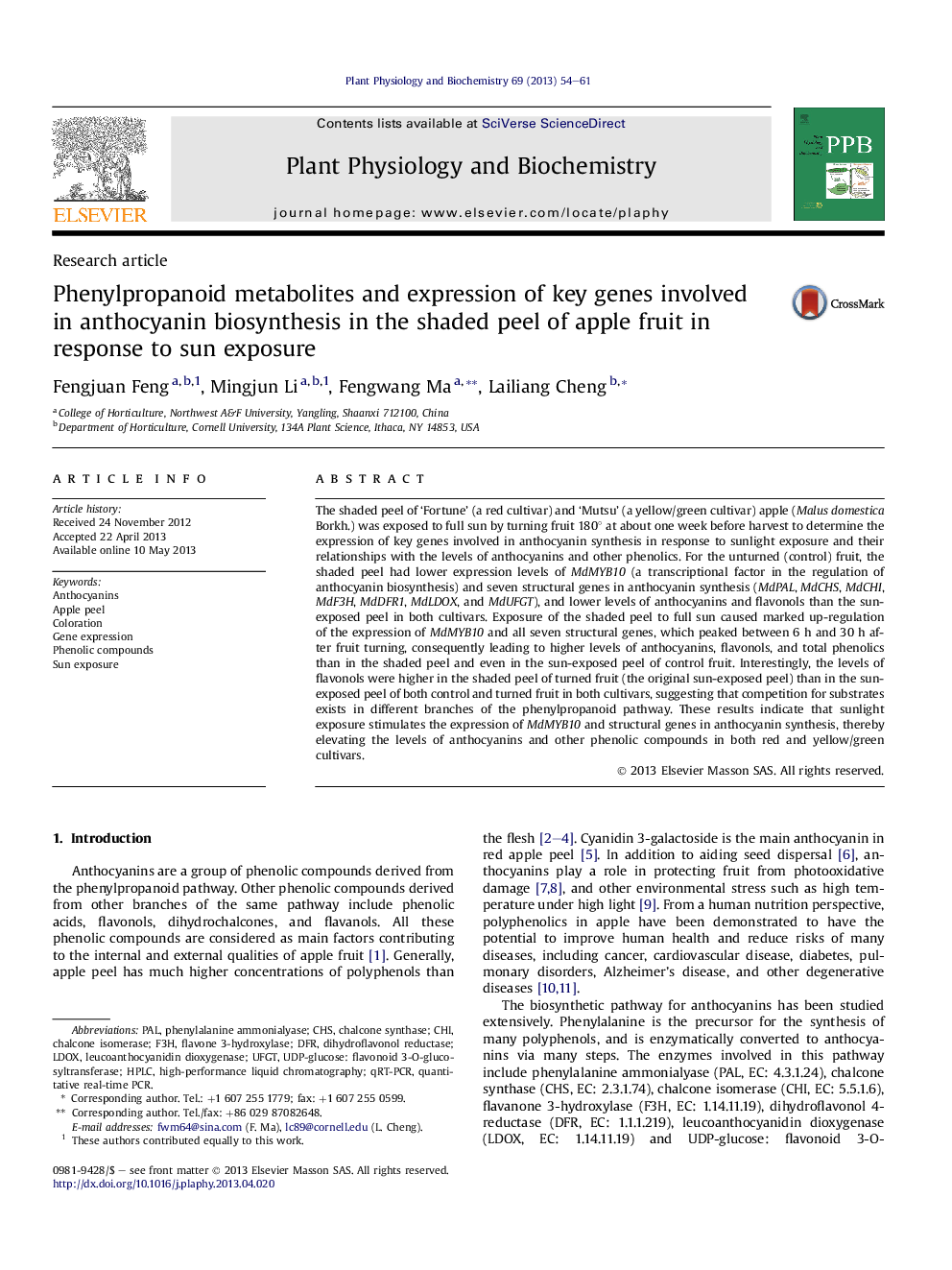| Article ID | Journal | Published Year | Pages | File Type |
|---|---|---|---|---|
| 2014875 | Plant Physiology and Biochemistry | 2013 | 8 Pages |
•Sun exposure of shaded peel up-regulated the expression of MdMYB10 & structural genes.•This up-regulation led to higher anthocyanins & flavonols in the original shaded peel.•Fruit turning also elevated the levels of flavonols in the original sun-exposed peel.•Turned fruit had better color and higher total phenolics in the peel than the control.
The shaded peel of ‘Fortune’ (a red cultivar) and ‘Mutsu’ (a yellow/green cultivar) apple (Malus domestica Borkh.) was exposed to full sun by turning fruit 180° at about one week before harvest to determine the expression of key genes involved in anthocyanin synthesis in response to sunlight exposure and their relationships with the levels of anthocyanins and other phenolics. For the unturned (control) fruit, the shaded peel had lower expression levels of MdMYB10 (a transcriptional factor in the regulation of anthocyanin biosynthesis) and seven structural genes in anthocyanin synthesis (MdPAL, MdCHS, MdCHI, MdF3H, MdDFR1, MdLDOX, and MdUFGT), and lower levels of anthocyanins and flavonols than the sun-exposed peel in both cultivars. Exposure of the shaded peel to full sun caused marked up-regulation of the expression of MdMYB10 and all seven structural genes, which peaked between 6 h and 30 h after fruit turning, consequently leading to higher levels of anthocyanins, flavonols, and total phenolics than in the shaded peel and even in the sun-exposed peel of control fruit. Interestingly, the levels of flavonols were higher in the shaded peel of turned fruit (the original sun-exposed peel) than in the sun-exposed peel of both control and turned fruit in both cultivars, suggesting that competition for substrates exists in different branches of the phenylpropanoid pathway. These results indicate that sunlight exposure stimulates the expression of MdMYB10 and structural genes in anthocyanin synthesis, thereby elevating the levels of anthocyanins and other phenolic compounds in both red and yellow/green cultivars.
